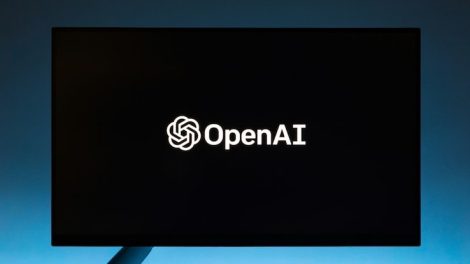Apple’s entry into the UALink Consortium for AI chip connectivity marks a significant moment in the ongoing evolution of artificial intelligence and hardware integration. The decision underscores Apple’s commitment to advancing its position within the AI ecosystem while collaborating with other major players to address the increasing demand for connectivity and efficiency in chip technology. With this move, Apple has signaled its intent to influence and shape the standards that will govern the next generation of AI hardware.

The UALink Consortium, established to create unified protocols for AI chip interconnectivity, aims to address challenges in communication between heterogeneous computing systems. This initiative includes leading technology firms and industry stakeholders, all working toward the development of open standards that enhance compatibility and performance. By joining this collective, Apple positions itself not just as a participant but as a leader in fostering collaboration across an industry that often operates in silos. The implications of this collaboration extend beyond mere technical advancements, reflecting broader shifts in how companies approach innovation and competition.
Apple’s involvement comes at a critical juncture as AI systems become increasingly complex, necessitating seamless integration between diverse components. AI workloads, which often rely on a mix of CPUs, GPUs, and specialized accelerators, demand robust connectivity solutions to optimize performance. Historically, the lack of standardization in this area has led to inefficiencies, limiting the potential of cutting-edge AI applications. The UALink Consortium’s work to establish common protocols aims to eliminate these barriers, creating a foundation for more effective and scalable AI systems. Apple’s expertise in hardware-software integration uniquely positions it to contribute meaningfully to these efforts.
One of the driving factors behind Apple’s decision to join the consortium is its focus on improving the efficiency and capabilities of its own AI-driven technologies. Apple’s devices, from iPhones to Macs, increasingly rely on AI-powered features to enhance user experiences. The Neural Engine, a key component of Apple’s proprietary chips, exemplifies the company’s dedication to embedding AI capabilities into its hardware. However, as AI applications grow more sophisticated, the need for improved interoperability between chips becomes ever more pressing. By participating in the UALink Consortium, Apple gains access to collaborative research and shared resources, accelerating the development of solutions that align with its goals.
This collaboration also reflects Apple’s strategic approach to navigating competitive pressures within the tech industry. By aligning itself with other major players in a cooperative initiative, Apple demonstrates its willingness to engage in partnerships that benefit the broader industry. Such alliances are particularly important in the AI domain, where rapid advancements necessitate shared knowledge and collective problem-solving. Moreover, Apple’s involvement sends a strong signal to competitors, reinforcing its status as a key influencer in the development of AI standards.
The significance of the UALink Consortium lies not only in its potential to streamline AI chip connectivity but also in its broader implications for the technology sector. As companies increasingly prioritize sustainability and energy efficiency, the development of standardized interconnect protocols becomes essential. Efficient communication between chips reduces energy consumption, addressing growing concerns about the environmental impact of AI systems. Apple’s commitment to environmental responsibility aligns with this goal, further motivating its participation in the consortium. By contributing to the creation of energy-efficient solutions, Apple strengthens its reputation as a leader in sustainable innovation.
Apple’s role within the UALink Consortium is expected to have far-reaching effects on its product development and market strategy. Improved chip connectivity could enable Apple to deliver more powerful and versatile devices, enhancing the performance of AI-driven features such as image recognition, natural language processing, and predictive analytics. These advancements would not only differentiate Apple’s products in a competitive market but also set new benchmarks for the industry. Additionally, the collaborative nature of the consortium provides Apple with opportunities to influence the direction of AI research and development, ensuring that emerging standards align with its vision.
The formation of the UALink Consortium and Apple’s involvement also highlight the growing importance of open standards in the technology industry. As AI systems become more complex, proprietary solutions often struggle to keep pace with the demands of interoperability and scalability. Open standards provide a framework for collaboration, enabling companies to pool resources and expertise to address common challenges. Apple’s participation in this initiative underscores the value of such collaborations, demonstrating that even industry leaders recognize the benefits of shared innovation.
While the immediate focus of the UALink Consortium is on technical challenges, its impact could extend to other areas of the industry. The establishment of common protocols for AI chip connectivity has the potential to drive broader standardization efforts, influencing everything from software development to regulatory frameworks. For Apple, this represents an opportunity to shape the future of technology in ways that align with its core principles. By actively contributing to the consortium’s work, Apple positions itself as a thought leader, advocating for standards that prioritize efficiency, sustainability, and user-centric design.
The benefits of Apple’s involvement in the UALink Consortium are not limited to the company itself. Consumers stand to gain from the advancements that emerge from this collaboration, as improved chip connectivity leads to more efficient and capable devices. Whether it’s faster processing speeds, longer battery life, or enhanced AI features, the results of the consortium’s work have the potential to transform the user experience. Furthermore, the adoption of standardized protocols could drive down costs, making advanced technologies more accessible to a broader audience.
For the broader tech industry, the UALink Consortium represents a model for how companies can work together to address complex challenges. By bringing together diverse stakeholders, the consortium fosters an environment of collaboration and innovation, setting a precedent for future initiatives. Apple’s involvement adds significant credibility to the consortium’s efforts, encouraging other companies to participate and contribute to the development of open standards. This collective approach has the potential to accelerate progress, benefiting not only the participants but also the industry as a whole.
Apple’s decision to join the UALink Consortium for AI chip connectivity reflects its commitment to advancing innovation through collaboration. By contributing to the development of standardized protocols, Apple aims to address critical challenges in AI hardware integration while reinforcing its position as a leader in the tech industry. The implications of this collaboration extend beyond technical advancements, highlighting the importance of shared innovation and open standards in shaping the future of technology. As the consortium’s work progresses, Apple’s involvement is likely to yield significant benefits for consumers, the industry, and the broader technological landscape.










Add Comment